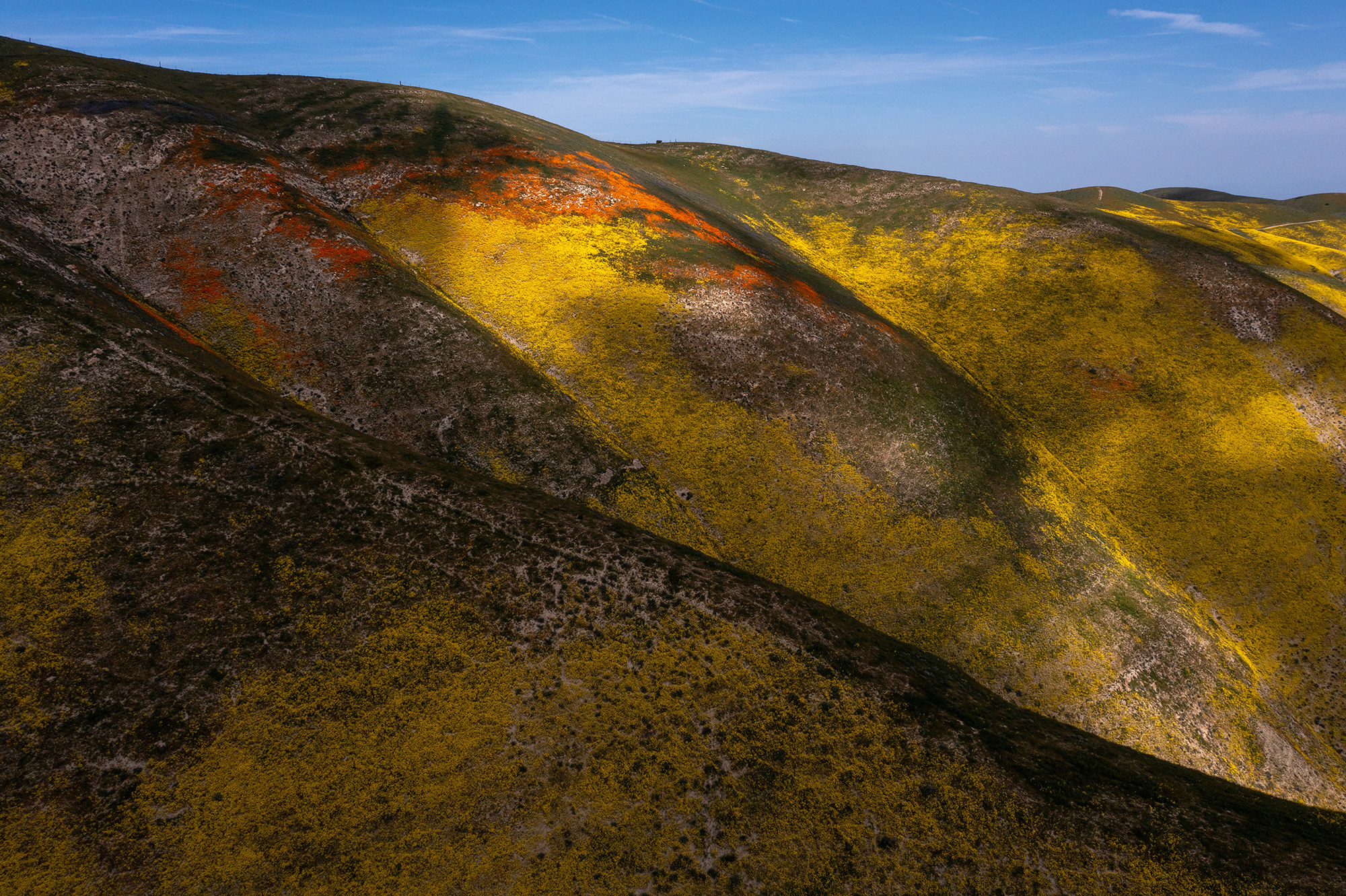
Over the past few months, California has experienced a variety of abnormally devastating weather events, from torrential rain to horrific mudslides, as a result of 31 atmospheric river storms affecting the state. The unusual wet weather broke California’s yearslong record drought conditions in most of the state. After harsh winter rains, the weather has finally settled in recent weeks, producing a historic superbloom, which is a rare desert occurrence that happens after an abundance of rainfall causes dormant seeds to germinate. This year’s superbloom is so large that it can even be seen from space. The last time California saw something close to this was four years ago.
“This is how we feed our souls,” Heather Schneider, a rare plant biologist at the Santa Barbara Botanic Garden, told the New York Times.
A multitude of colorful poppies, mustard, goldfields, and other wildflowers have decorated the landscape of Monterey, San Luis Obispo, and Kern counties. Over the past few weeks, locals and tourists from out of state have made pilgrimages to take selfies near the impressive array of dazzling flowers. Places like the Antelope Valley California Poppy Reserve are hot spots for visitors posting their eye-catching selfies to social media.

In one of the most impressive sites of this year’s superbloom, various wildflower species appear to paint the Temblor Range. It’s a mountain range that touches on the east side of the San Andreas Fault at Carrizo Plain National Monument, which is about a three-hour drive north of Los Angeles. Due to heavy foot traffic during 2019’s superbloom, park officials noticed patches of flowers that didn’t sprout this year. Because of this, California’s Department of Parks and Recreation has been working to inform the public about safety and responsibility when visiting the superbloom.
“We want to make sure that everyone has a positive experience when exploring [the flowers],” State Parks director Armando Quintero said in a statement. “California State Parks welcomes all to enjoy these unpredictable, rare occurrences but asks visitors to ‘Don’t Doom the Bloom’ by staying on designated trails and taking only photos, not flowers.”

















